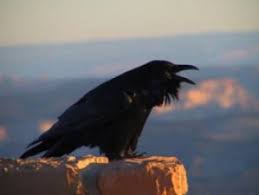
Predominating models that are favored by ecologists is proving inadequate to predict the trends of alteration of North American winter bird communities due to climate change.
Established and researched trends in animals in varying climate zones helps ecologists predict that with warming habitats, the number of present in a region would increase and the new species would tend to be smaller in size and would be confined in smaller geographic ranges. However, for the North American birds, only one out of the three presumptions are found to hold ground within the last 25 years or so, claims ecologists at the University of California, San Diego.
Rather, the researchers have found out that when weathers get warmer, “weedy” species are more likely to dominate a geographic area. And such species are typically more adaptable to a wide range of habitats and hence can exist over larger geographic grange. An advantage exists for larger birds which are generally better dispersers compared to smaller species. This was reported by the researchers in the early online edition of the Proceedings of the Royal Society B.
"The changes, at least initially, are likely to favor generalist species, those in the best position to respond to changes," said Frank La Sorte, a post-doctoral fellow at UC San Diego and first author of the paper. "It's going to be difficult using existing spatial ecological patterns to predict the outcome of climate change."
Annual Christmas Bird Count was the basis of the assessment of the team. In this event, volunteers of the National Audubon Society identify bird species on the basis of either visual or sounds within a 24 kilometer wide circle in their communities for a period of 24 hours during early winter.
There were 4040 sites in North America where such volunteers conducted bird survey each year from 1975 till 2001. These were found by the team. There has been an increase of about one degree Celsius in the average annual temperature in these communities during the time period.
And as temperature climbed, there was a notable increase in the numbers of species that were identified at every site based on predictions of spatial models. But the possible reason for that increase can be the bigger and more widespread species getting common. This is a trend that does not reflect the existing differences between ecological communities that exist in warmer parts of the world compared to the cooler regions.
"Biodiversity is under severe threat from climate change, and the lack of long-term data makes accurate forecasting of likely impact notoriously difficult," said Walter Jetz, associate professor of biology at UC San Diego and senior author of the paper. "Our study illustrates the limitations of using spatial relationships that were established over millennia to model the ecological consequences of current climate change, which is proceeding at a very rapid rate. Rigorous assessment will require much more extensive, long-term monitoring of ecological communities."
(Source:www.biology.ucsd.edu)
Established and researched trends in animals in varying climate zones helps ecologists predict that with warming habitats, the number of present in a region would increase and the new species would tend to be smaller in size and would be confined in smaller geographic ranges. However, for the North American birds, only one out of the three presumptions are found to hold ground within the last 25 years or so, claims ecologists at the University of California, San Diego.
Rather, the researchers have found out that when weathers get warmer, “weedy” species are more likely to dominate a geographic area. And such species are typically more adaptable to a wide range of habitats and hence can exist over larger geographic grange. An advantage exists for larger birds which are generally better dispersers compared to smaller species. This was reported by the researchers in the early online edition of the Proceedings of the Royal Society B.
"The changes, at least initially, are likely to favor generalist species, those in the best position to respond to changes," said Frank La Sorte, a post-doctoral fellow at UC San Diego and first author of the paper. "It's going to be difficult using existing spatial ecological patterns to predict the outcome of climate change."
Annual Christmas Bird Count was the basis of the assessment of the team. In this event, volunteers of the National Audubon Society identify bird species on the basis of either visual or sounds within a 24 kilometer wide circle in their communities for a period of 24 hours during early winter.
There were 4040 sites in North America where such volunteers conducted bird survey each year from 1975 till 2001. These were found by the team. There has been an increase of about one degree Celsius in the average annual temperature in these communities during the time period.
And as temperature climbed, there was a notable increase in the numbers of species that were identified at every site based on predictions of spatial models. But the possible reason for that increase can be the bigger and more widespread species getting common. This is a trend that does not reflect the existing differences between ecological communities that exist in warmer parts of the world compared to the cooler regions.
"Biodiversity is under severe threat from climate change, and the lack of long-term data makes accurate forecasting of likely impact notoriously difficult," said Walter Jetz, associate professor of biology at UC San Diego and senior author of the paper. "Our study illustrates the limitations of using spatial relationships that were established over millennia to model the ecological consequences of current climate change, which is proceeding at a very rapid rate. Rigorous assessment will require much more extensive, long-term monitoring of ecological communities."
(Source:www.biology.ucsd.edu)














